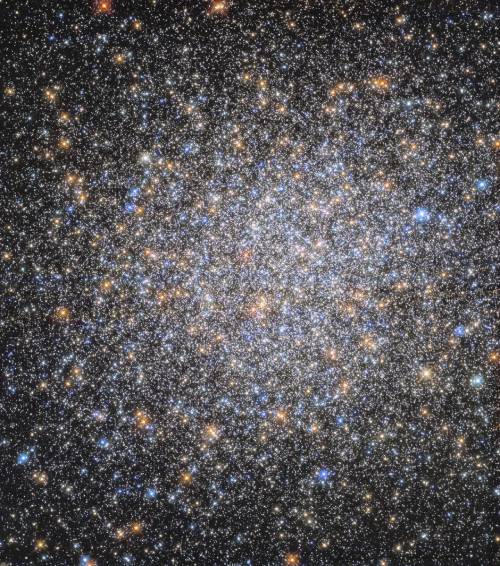Messier 14 (M14) is a prominent globular cluster located in the constellation Ophiuchus, also known as the Serpent Bearer. Situated approximately 30,000 light-years from Earth, M14 was discovered by French astronomer Charles Messier on June 1, 1764, and became the 14th entry in his catalogue of non-cometary objects.
Composition
M14 is a dense, spherical collection of stars bound together by gravity, characteristic of globular clusters. It contains hundreds of thousands to possibly over a million stars, most of which are very old and metal-poor, having formed in the early stages of the Milky Way’s history. Like many globular clusters, M14 orbits in the galactic halo, encircling the galaxy’s centre.
The stars within M14 are estimated to be around 13 billion years old, placing them among the oldest known stars in the Milky Way. The cluster is populated mostly by red giants—older stars that have expanded and cooled over billions of years. In addition to these red giants, M14 contains main-sequence stars and a smaller population of blue stragglers. These blue stragglers are unique in that they appear younger and hotter than their surroundings, likely due to stellar collisions or mergers within the cluster’s dense core. M14 has an estimated diameter of about 100 light-years.
Observation
With an apparent magnitude of around 7.6, M14 is visible in binoculars and small telescopes under good viewing conditions, though it appears as a faint, fuzzy smudge compared to brighter objects. A telescope with moderate magnification can resolve more detail, particularly revealing the cluster’s dense central region.
M14 can be observed from both hemispheres, as the constellation Ophiuchus lies along the celestial equator. In the Northern Hemisphere, it is best viewed during the summer months from June to August, when Ophiuchus is high in the evening sky, offering optimal visibility. In the Southern Hemisphere, M14 is visible during the winter months of June to August, when Ophiuchus is well-placed for southern observers.
Due to its relatively faint appearance, observing M14 is most effective under dark-sky conditions, away from city lights.
Amateur astronomers can find it a rewarding target, especially through a telescope that reveals its densely packed stars and spherical form. Observing M14 provides a glimpse into the galaxy’s oldest stellar population, showcasing a compact assembly of ancient stars bound together over billions of years.




